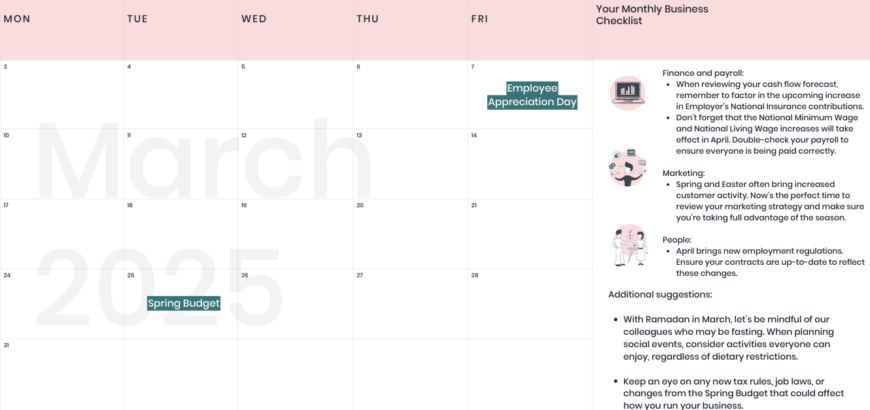

A Xero report revealed a sobering reality: two in five (41%) small business owners have sacrificed their own salaries, and one in three (34%) have dipped into their personal savings just to keep their businesses afloat. This stark reality underscores the urgent need for robust cash flow management. Now, more than ever, cash flow forecasting isn’t just a good idea – it’s a critical lifeline.
If you’re going to do anything this week to improve your business’s financial health, start with these five simple things that are often overlooked but can significantly impact your cash flow:
- Invoice Immediately: Implement a system to invoice clients immediately upon completion of work or delivery of goods to reduce the time between service provided and payment received.
- Negotiate Payment Terms: Contact key clients and suppliers to discuss shortening payment terms for clients and extending payment terms for suppliers.
- Prioritise Overdue Invoices: Implement a system for consistent follow-up on overdue payments to reduce the amount of money tied up in unpaid invoices.
- Review and Control Expenses: Conduct a thorough review of all business expenses and identify areas for potential cost reduction.
- Create a Simple Cash Flow Forecast: Develop a basic cash flow forecast for the next 30-60 days to clearly understand upcoming cash flow needs.
These actions, while seemingly small, can have a significant compound effect on your business’s financial stability.
Understanding your cash flow is paramount to navigating these challenging times. Cash flow forecasting provides a crucial window into the future financial health of your business. By accurately predicting your income and expenses over a specific period, you can:
- Identify potential cash shortages: Early identification of cash flow gaps allows you to proactively seek solutions, such as securing short-term loans, negotiating payment terms with suppliers, or accelerating customer payments.
- Make informed business decisions: Accurate forecasts empower you to make informed decisions about investments, hiring, and other key business activities. For example, you can determine if you have the financial capacity to expand, invest in new equipment, or pursue a new market.
- Secure funding: Banks and investors often require cash flow forecasts as part of their loan application process. A well-prepared forecast demonstrates your business’s financial viability and increases your chances of securing funding.
- Improve budgeting and financial planning: By regularly reviewing your cash flow forecasts, you can identify areas for cost reduction, improve your budgeting process, and make more informed financial planning decisions.
Key Factors to Consider in Your 2025 Cash Flow Forecast
Sales Revenue:
- Historical data: Analyse past sales trends and identify any seasonal fluctuations.
- Market conditions: Consider the overall economic climate, competitor activity, and potential changes in consumer behaviour.
- Pricing strategies: Evaluate the impact of potential price increases or discounts on sales volume.
Expenses:
- Operating costs: Include costs such as rent, utilities, salaries, and marketing expenses.
- Cost of goods sold (COGS): Account for the cost of materials, labour, and other expenses directly related to producing your goods or services.
- Debt repayments: Factor in any loan repayments, interest payments, and other debt obligations.
Funding:
- Potential sources of funding: Include bank loans, lines of credit, and investor funding.
- Funding requirements: Determine the amount of funding you may need to support your growth plans and cover any potential cash shortages.
Tips for Effective Cash Flow Forecasting
- Regularly review and update your forecast: Economic conditions can change rapidly. Regularly review and update your forecast to reflect the latest market trends and internal business developments.
- Utilise cash flow forecasting software: Consider using software to help automate the forecasting process and generate more accurate and insightful reports.
- Collaborate with your accountant: Your accountant can provide valuable guidance and expertise in developing and interpreting your cash flow forecasts.
- Develop contingency plans: Prepare for unexpected events by developing contingency plans to address potential cash flow disruptions, such as a sudden drop in sales or an increase in expenses.
By proactively monitoring your cash flow, you can identify and mitigate potential risks, make informed business decisions, and ensure the long-term sustainability of your business.


